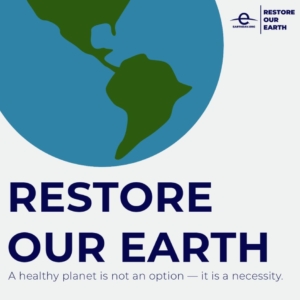Earth Day 2021
We need a sustainable planet
To feed the world, we must adopt the latest techniques to support farmers, renew their land, and capture carbon through regenerative agriculture and sustainable food practices.
Key Messages:
- A foodprint measures the environmental impacts associated with growing, producing, transporting, and storing our food — from the natural resources consumed to the pollution produced to the greenhouse gases emitted.
- Regenerative farming offers solutions to transform farmers into environmental and societal heroes. It promotes the health of degraded soils by restoring their organic carbon. Regenerative agriculture sequesters atmospheric carbon dioxide, reversing industrial agriculture’s contributions to climate change. Regenerative practices such as no till farming and cover cropping are reducing erosion and water pollution, and in turn producing healthier soils.
- Regenerative agriculture counters climate change and promotes food security by restoring soil, organic matter, and biodiversity as well as reducing atmospheric carbon. It’s an evolving holistic nature-based approach that boosts topsoil, food production and farmers’ incomes. The robust soils and diverse ecosystems that its organic practices create yield more high-quality, nutrient-rich produce than conventional agriculture, fostering fruitful farms, healthy communities and thriving economies.

